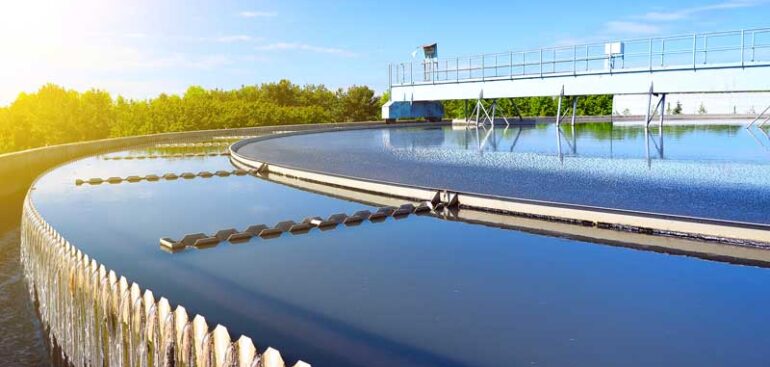The unique characteristics of formaldehyde chemistries provide the world with a vital chemical building block. Formaldehyde offers versatility, low cost, simplicity of use and good fixation traits that industries rely on to produce a vast array of goods. Companies like Brainerd Chemical play a role in keeping our economy strong by supplying high-quality formaldehyde. In fact, the American Chemistry Council reported that products based on formaldehyde technologies boost the U.S. economy by supporting 963,000 jobs and $553 billion in annual sales.
Best known as a preservative and antiseptic, formaldehyde is used to produce automotive parts, fertilizer, oil & gas, paper, plywood, semiconductors, textiles, as well as household products such as antiseptics, medicines, and cosmetics. It is used to protect animal health, improve agricultural production, and preserve food or other organics.
Formaldehyde Solutions at Brainerd Chemical Company
As one of the largest formaldehyde packagers in the United States, Brainerd Chemical is at the forefront of formaldehyde’s versatile role fueling the economy. Our experts play a pivotal role helping to ensure consistent and safe supply across a wide variety of applications. And we are proud to be the only company in the United States with an EPA registration for formaldehyde utilized in the animal health sector.
Brainerd Chemical Company’s formaldehyde product portfolio offers comprehensive scope, while our strong in-house technical expertise enables us to tailor services and products to your specific needs. We provide custom-blends to your specific requirements as well as EPA Registered and Tech grades in standard concentrations of:
- 37% Formaldehyde (EPA Registered)
- 37% Formaldehyde with 7% methanol (Tech Grade)
- 37% Formaldehyde with 11% methanol (Tech Grade)
- 37% Formaldehyde with 12% methanol (Tech Grade)
- 37% Formaldehyde with 13% methanol (Tech Grade)
- 37% Formaldehyde with 14% methanol (Tech Grade)
- 37% Formaldehyde with 15% methanol (Tech Grade)
Brainerd supplies formaldehyde in 1-gallon jugs, drums, totes or bulk tanker quantities distributed through our nimble hybrid distribution network.
Our customers report that Brainerd Chemical’s 3 greatest benefits are:
- Outstanding service response times
- Unparalleled product quality
- Prompt and efficient lead times
Whether you are an established large-scale buyer or a market newcomer, our team’s service-driven approach ensures a complete, safe and consistent high-quality formaldehyde supply tailored to your specific needs.
Formaldehyde Facts
- Humans Produce Formaldehyde. That’s right, the human body produces formaldehyde. Many people wrongly assume that formaldehyde is a synthetic compound when it’s actually an organic compound. Organic compounds are chemicals that occur naturally through processes like animal metabolism. People are exposed to naturally occurring formaldehyde daily. The average person processes about 1.5 ounces of formaldehyde each day as part of normal metabolism when consuming and digesting food. Formaldehyde is normally present in human blood at a low steady-state concentration of approximately 1 to 2 parts-per-million.
- Formaldehyde Occurs Naturally in Produce. Trace amounts of formaldehyde form as a byproduct of normal metabolic processes. Characteristic aromas of fruits like bananas, apples, and tomatoes is intensified by the release of small amounts of formaldehyde as they ripen.
- Formaldehyde Is One of the Most-Studied Chemicals. Scientists have been carefully studying formaldehyde and its effects on human health for over 40 years. All these years of research have shed light on how to safely handle formaldehyde, as well as how formaldehyde can impact your health. Although formaldehyde is an organic compound, you should still understand its risks and exposure limits because it’s a dangerous chemical. It’s best to consult professionals when doing anything that involves formaldehyde.
- Formaldehyde contributes to a more sustainable future. Formaldehyde promotes renewable resources, high performance, and efficient use. The use of formaldehyde-based resins in wood panel and board products also enables the sustainable use of forest resources by improving the utilization rate of wood resources. Composite panels allow 95% of a tree to be used vs only 63% of a tree can be used for solid lumber. Composite wood panels are typically made from recovered wood waste that would otherwise be burned or disposed of in a landfill. Wood panel products can be carbon neutral based on greenhouse gas emissions
Formaldehyde is Essential
Thanks to the chemical reactions involving formaldehyde, we are able to enjoy higher-quality, more durable, and safer goods. It is an essential reactive intermediate vital to the production of thousands of products that we rely on everyday. Formaldehyde is also commonly used as a preservative in medical laboratories, mortuaries, and consumer products, including cosmetics.
Formaldehyde provides exceptionally high functionality in a resource-efficient way. Simply put, it is affordable. No other organic molecule is able to achieve the same results at the same cost. Resource-efficiency also means materials and energy are not wasted in its production.
Formaldehyde’s Many Uses
Whether it’s used in plywood for home construction, fuel system components for automobiles or door and window insulation for modern airliners, formaldehyde provides greater utility for consumers in the form of extended use, consistent quality and reliable performance and safety.
An incredibly versatile compound, Formaldehyde is used in aerospace, agricultural, animal health, automotive, building and construction, energy, healthcare, semiconductor, textile and many other industries. It is used as a pesticide, antimicrobial, disinfectant or biocide.
It’s used in thousands of household products such as glues, permanent press fabrics, paints and coatings, lacquers and finishes, and paper products; Preservatives used in some medicines, cosmetics and other consumer products such as dishwashing liquids and fabric softeners; Fertilizers and pesticides; Building materials, insulation and composite wood products.
Urea-formaldehyde is a resin used in adhesives, finishes, particle board, MDF, and molded objects; melamine resin is a hard, thermosetting plastic used in high-pressure laminates; and Phenol formaldehyde resin are synthetic polymers used to make billiard balls and normal brake pads. Formaldehyde-based resins are also used int the textile industry to make fabrics crease-resistant. Automobile manufacture is full of formaldehyde-based materials, including components for the transmission, electrical system, engine block, door panels, axles and brake shoes.
In health care and food, formaldehyde is a key component of vaccines as it suspends the trace sample of a virus within the vaccine. This suspension prevents the virus from activating and getting us sick but allows our immune system to fight and become familiar with it so that our immune systems become stronger against it. Similarly, while it can’t suspend food, the same uses and benefits of formaldehyde are applied to lengthen the shelf life of food and cut back on the amount of waste accrued from food simply going bad.
Non-registered Formaldehyde
Formaldehyde is a common precursor to more complex compounds and materials that are used in various industries. Applications include automobile component manufacturing, paints and explosives, pressed-wood products, glues and adhesives, paper product coatings, tissue specimen preservation, fluid embalming, and preservation of animal specimens for dissection.
EPA Registered Formaldehyde
In the animal health industries, formaldehyde is commonly used to disinfect (via fumigating, sprinklers, and spray sleds) poultry and swine confinement buildings, egg hatcheries, rooms, railway cars, mushroom houses, tools, and equipment. Brainerd Chemical Company is the only supplier of EPA registered formaldehyde for animal health in the United States. Formaldehyde kills most bacteria and fungi (including spores), which makes it a valuable packaged preservative in the food and beverage industry. It is also used to kill produced vaccines and is used as an antiseptic in medicine and as a disinfectant in funeral homes.
Aerospace
Chemicals and polymers derived from formaldehyde are used in aerospace because of their flame resistance, thermal protection, and impact resistance. Polyurethanes are used to make polyurethane foams that provide support and comfort in airplane seats. The cabin flooring and cargo liner are made from honeycomb material reinforced with phenolic resins which provide high impact resistance.
Agriculture & Animal Health
Across the agricultural industry, formaldehyde helps American families access safe meat, poultry, and aquaculture products. It helps protect livestock against diseases capable of causing catastrophic economic losses across the United States. Formaldehyde helps keep hooves free of fungus and disease, is used in animal feed manufacturing as an antimicrobial agent to keep feed or feed ingredients Salmonella negative for up to 21 days, and is used as a treatment for parasites and is one of the main disinfectants recommended for destroying anthrax. Brainerd Chemical Company is the only supplier of EPA registered formaldehyde for animal health in the United States.
Automotive
In the automotive industry, formaldehyde-based technologies are used to make interior molded and under-the-hood components that allow for higher fuel efficiency by reducing vehicle weight. It is also used in the production of highly durable exterior primers, clear coat paints, tire-cord adhesives, brake pads and fuel system components.
Building & Construction
Formaldehyde is used in the building and construction industry for a variety of industrial applications and materials that we rely on every day. For example, formaldehyde-based resins are used to manufacture composite and engineered wood products used in cabinetry, countertops, moldings, furniture, shelving, stair systems, flooring, wall sheathing, support beams and trusses and many other household applications.
Formaldehyde-based resins (industrial-type adhesives) are used as the binder system to glue wood chips and other materials together to make plywood, particleboard and fiberboard, sheathing and cladding, asphalt shingles, furniture and paneling, kitchen cabinets, molding and trim work, insulation and flooring systems, as well as paints and varnishes and numerous other applications for the housing industry.
Energy Production
Formaldehyde is used to improve the yield petroleum and natural gas fuels. In muds, paraformaldehyde is added to protect against bacterial attack. The formaldehyde test determines the paraformaldehyde (bactericide) content of a drilling fluid by a P-alkalinity titration of a sulfite-oxidized mud filtrate.
Health & Hygiene
Many different chemical reaction products, or resins, are created from the chemistry of formaldehyde. These intermediate materials, in turn, are used to create other compounds having different properties. These unique chemistries can then be used as preservatives in personal care products because they kill bacteria, or to make other products more effective, such as the foaming action in soaps and detergents. Formaldehyde releasers are used as biocides in personal care products such as cosmetics These products can help improve hygiene and protect your health.
Science & Preservation
Formaldehyde has various applications in science and preservation including biological research, histological exams/microscopy, vaccine production, disinfection and sterilization, taxidermy, anatomical and forensic studies, funeral services, and the preservation of zoology and botany specimens in museums.
Semiconductors
In semiconductor manufacturing, formaldehyde may be contained in leveling additives during electrolytic copper planting, chemical mechanical planarization slurry formulations, lithography formulations, and mold compounds used for plastics packages.
Safety
Formaldehyde is incredibly toxic to all animals (including humans) and is a known carcinogen. If ingested, even water solutions of formaldehyde are highly corrosive and can cause injury to the upper gastrointestinal tract. Exposure to formaldehyde through inhalation mainly occurs through the thermal or chemical decomposition of resins, emission from aqueous solutions, or the production of formaldehyde from the combustion of organic compounds (such as cigarette smoke). Exposure can cause irritation to skin, eyes, nose and throat, and high levels of exposure can cause some types of cancers.
Are there a safer alternatives to formaldehyde?
Few, if any, compounds can replace formaldehyde chemistry in creating high-quality resins without compromising quality and performance or making the final products significantly more expensive. Formaldehyde is an essential building block in a diverse range of goods, its end use is primarily in a converted form. That means that virtually all the formaldehyde is consumed in making the final product.
ABOUT BRAINERD CHEMICAL COMPANY
Brainerd Chemical Company is one of the largest independent providers of chemicals and related services in the United States. As a manufacturer and hybrid distributor with a strategic network of facilities located in Oklahoma, Illinois, North Carolina, Mississippi, and Delaware. Brainerd Chemical Companies’ dedicated team of engineers, chemists and skilled technicians are high-hazard chemistry specialists proudly leading the way in safe, responsible chemical manufacturing and supply. https://brainerdchemical.com
MEDIA INQUIERIES
1.918.622.1214
SOURCE: Brainerd Chemical Company






